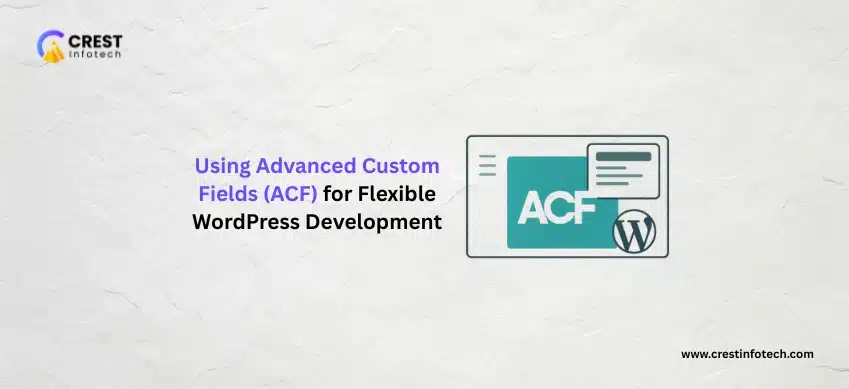Building dynamic and easy-to-manage WordPress websites goes beyond themes and plugins — it’s about giving clients and developers full control over content structure. Advanced Custom Fields (ACF) transforms WordPress into a flexible content management system, letting you create tailored editing experiences without writing complex code.
1. What is Advanced Custom Fields (ACF)?
ACF is a powerful plugin that allows developers to add custom fields to WordPress posts, pages, and custom post types.
- Create structured and reusable content layouts
- Control the admin editing experience for clients
- Extend WordPress beyond basic title and content fields
2. Setting Up ACF in WordPress
Getting started with ACF is straightforward.
- Install and activate the Advanced Custom Fields plugin (free or Pro version)
- Go to Custom Fields → Add New in your WordPress dashboard
- Create a new field group and assign it to specific post types or templates
“Think of field groups as custom data containers that appear where you need them — whether posts, pages, or custom templates.”
3. Types of Fields You Can Create
ACF offers a wide variety of field types for different content needs.
- Text, textarea, and WYSIWYG editor for basic input
- Image, gallery, and file upload fields for media
- Repeater, flexible content, and relationship fields for dynamic layouts
4. Displaying ACF Data in Your Theme
Once you’ve created custom fields, displaying them in your theme is simple.
- Use the
the_field()function to output a field value - Use the
get_field()function to retrieve and manipulate field data - Integrate fields within your
single.php,page.php, or custom templates
if( get_field('field_name') ) to avoid empty content blocks on your pages.5. Creating Reusable Layouts with Flexible Content
The Flexible Content Field (ACF Pro) allows developers to build modular page sections.
- Design layout “blocks” like hero banners, info sections, or testimonials
- Let clients add, reorder, or remove blocks visually from the admin
- Maintain a consistent, brand-aligned design system
“Flexible content turns WordPress into a page builder — but with clean, custom code and full design control.”
6. Using ACF with Custom Post Types
ACF pairs perfectly with custom post types for organizing specialized content.
- Create post types for portfolios, team members, or services
- Attach field groups that match the specific data structure
- Display the data using dedicated templates like
single-service.php
7. Enhancing User Experience in the Admin Area
ACF isn’t just for front-end display — it also improves the back-end workflow.
- Use field groups to simplify the editing interface
- Hide unnecessary default WordPress fields for cleaner editing
- Provide clear field labels and instructions for clients
8. Integrating ACF with Theme Builders and Plugins
ACF integrates seamlessly with modern tools and builders.
- Connect with Elementor or Beaver Builder to insert dynamic ACF data
- Use ACF blocks to add custom Gutenberg components
- Combine with WPML for multilingual content management
“ACF bridges the gap between static templates and dynamic, client-friendly websites.”
Final Thoughts
Advanced Custom Fields empowers developers to create flexible, scalable, and user-friendly WordPress sites. By defining custom data structures, improving the admin experience, and integrating seamlessly with modern tools, ACF helps you build projects that are both technically robust and easy for clients to manage. Embrace ACF to unlock the full potential of WordPress as a true content management system — not just a blogging platform.



